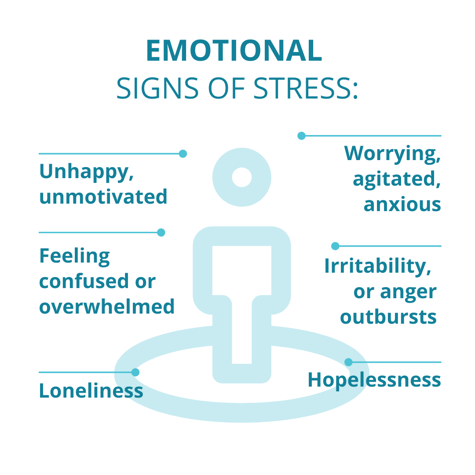This state is often confused with stress or anxiety, but it has its own unique psychological depth and context. Understanding it is essential for anyone seeking to live consciously, healthily, and in deeper connection with themselves.
To better understand emotional tension, it's important to distinguish it from two other commonly used terms—stress and anxiety. While all three relate to our emotional state, their causes, duration, and effects are quite different.
To use a metaphor: stress is like falling into a fire. Anxiety is the fear of fire—even when there’s no flame. Emotional tension is the slow burn of old embers—hidden, but always smoldering beneath the surface.
Emotional tension is like holding your breath for too long. It’s the inner pressure that arises when emotions are left unspoken, unprocessed, or denied. It’s born not from what we feel, but from the fact that we don’t allow ourselves to feel it.
It can stem from unfinished emotional situations, unsaid truths, unmet needs, or early life experiences where emotions were dismissed or punished. Imagine someone who, as a child, was told to "be strong," "don’t cry," or "stop being dramatic." They grow up continuing the same pattern—hiding their pain, ignoring their fatigue, and always pushing forward because they believe they have to.
Over time, those bottled-up emotions—anger, sadness, guilt, shame, longing—become stored energy in the body: in the muscles, the breath, posture, even the voice. Emotional tension is like an invisible harness wrapping around the mind and body, keeping us from feeling fully alive.

Emotional tension rarely appears as dramatic breakdowns. Instead, it tends to show up subtly but persistently, affecting nearly every aspect of life.
In the body:
In the mind and behavior:
Often, people don’t even realize these are symptoms of emotional tension. They assume something is wrong with them or that they’re simply "too sensitive." But this isn’t weakness—it’s the body and psyche trying to signal that emotional needs have been neglected too long.
Emotions get stuck because we’re often taught to suppress them from a young age. We’re told “don’t cry,” “be nice,” “don’t be angry,” “don’t burden others with your feelings.” These lessons shape a belief system that emotions—especially the intense or “negative” ones—are unsafe or unacceptable.
As adults, we continue these patterns unconsciously. We avoid conflict, smile when we want to cry, stay silent when we want to scream, or stay busy to avoid facing pain. But unexpressed emotions don’t disappear. They become stored in the body—a silent emotional backlog—until they manifest as tension, dysfunction, or illness.
In psychological terms, this is emotional repression: a defense mechanism that helps us cope short-term, but harms us long-term. These unprocessed emotional experiences become like unfinished stories in our nervous system, always seeking closure.
When someone is full of internal pressure, they often become unavailable to others. It’s not that they don’t care—they just don’t have the emotional energy to give. They may appear cold, irritated, distant, or controlling—not because of others, but because of the war going on inside them.
This inner conflict often gets projected outward. For example, a person under heavy emotional tension may become overly critical of their partner, short-tempered with their kids, or distant with friends. Emotional tension becomes like a silent third person in the relationship—always present, yet never acknowledged.
It prevents emotional intimacy, blocks communication, and creates misunderstandings. People may fight about dishes or tone of voice, but underneath lies something deeper: the pain of being disconnected—from self and others.
Emotional tension doesn’t go away with a weekend off or a bath bomb. It’s not a cosmetic issue—it’s a deep, layered condition that needs attention, patience, and courage. Reducing it means making emotional hygiene a daily practice, just like brushing your teeth.
Key practices include:
Most importantly, consistency and compassion are key. Emotional tension didn’t build up overnight—releasing it will take time and gentleness, not pressure.

Emotional tension is not weakness. It is a signal—a quiet, persistent voice asking us to slow down, listen inward, and tend to what’s been neglected. It forms not because we’re flawed, but because we’ve been surviving in ways that no longer serve us.
True healing begins when we stop trying to fix ourselves and instead start feeling ourselves—honestly, kindly, fully. Emotional tension doesn’t ask us to do more. It asks us to feel more, with presence, acceptance, and love.
# emocinė įtampa